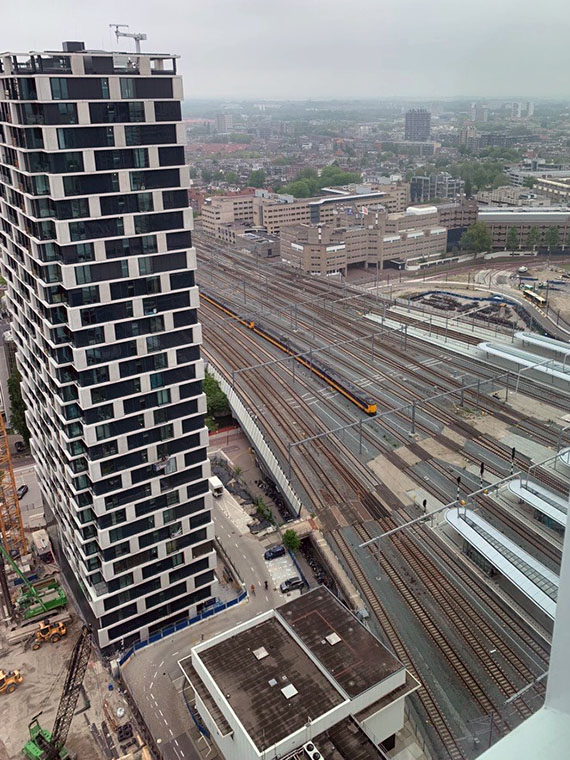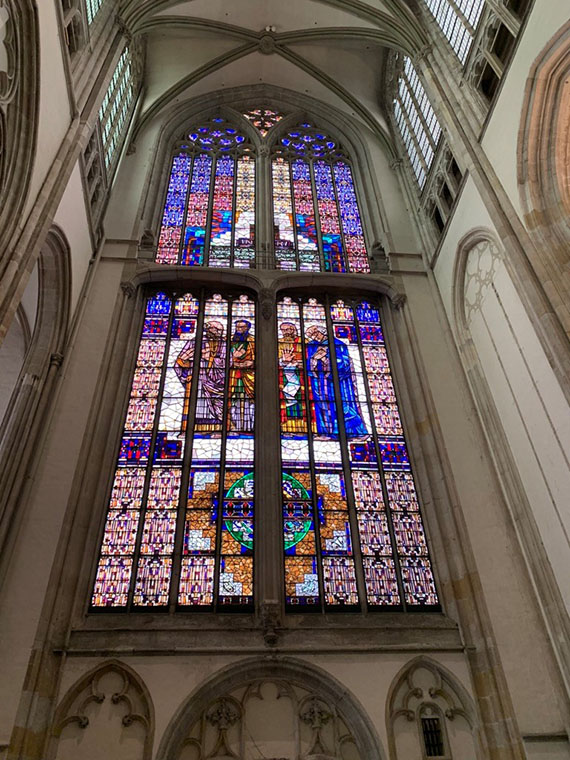Zags Visit Utrecht, Holland



From here we traveled along a canal to a busy intersection that incorporates traffic signals with a round-about (below). On an average day 10,000 cars pass through this intersection which was making it difficult for cyclists and pedestrians. This new design made it confusing for drivers but safe for cyclists and pedestrians.


Being a pedestrian during rush-hour in Utrecht is a bit like real-life Frogger. Bicycles are given priority and do not have to yield to pedestrians. We had to hurry to cross the busy cycle tract.
The Utrecht Vaartsche Rijn train stop (below) is considered a multi-model location. How many modes of transportation can you spot in the picture?


The last stop on our morning tour was at an intersection that was re-designed to accommodate and prioritize cycle and pedestrian traffic over vehicles. This used to be a very busy road, made of asphalt and concrete and dominated by cars, making it difficult for people to safely access neighborhood amenities. Now cars are 'guests' here and cars in both directions share one lane.
Adriaen van Ostadelaan used to be a four-lane roadway. Today, wide paths (cycle tracts) for bicycles and separate walkways for pedestrians safely accommodate alternative transportation modes.
After a delicious lunch at Federation Burger, we met up with Ronald Tamse, City of Utrecht Traffic Engineer, at the Utrecht City Hall. Ronald welcomed us with coffee, tea, and cookies as we began a short overview of projects from around the city that have integrated multi-model transportation systems, transitioning a vehicle-centric area into one that prioritizes bicycle and pedestrian modes of travel.



One impressive project involves removing a highway and restoring the canal that was historically there. The plans (left) show what the canal restoration project should look like in 2020. Demolition is still underway today (below).



We said goodbye to our wonderful and comedic tour guide at the "Skyscraper." This sculpture of a whale is made from 5-tons of plastic waste that was pulled out of our oceans and sends a powerful message about the oceanic pollution problems we are faced with today.


